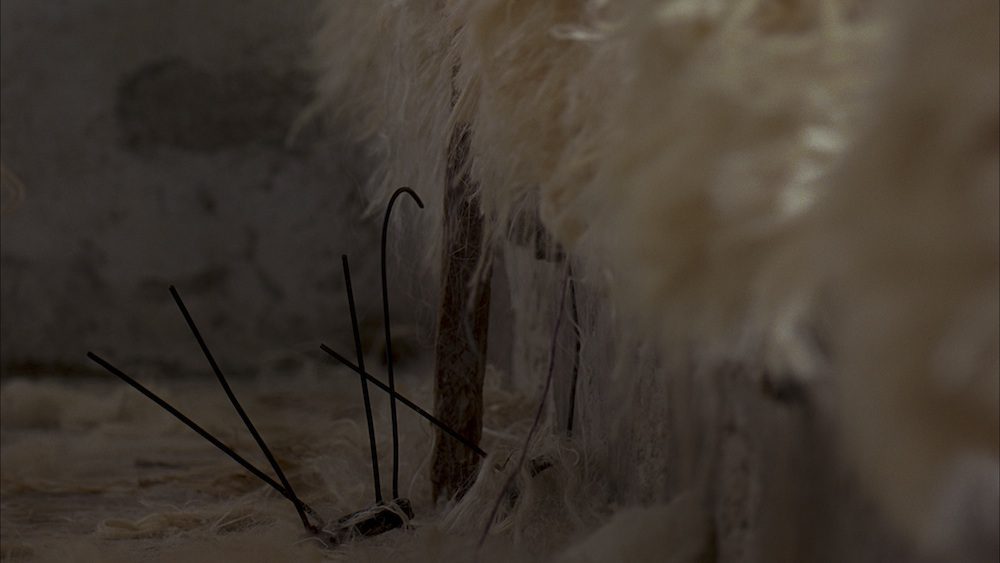Two Approaches: Camille Henrot and Zarina Bhimji
Tori Bush compares works by P.3 artists Zarina Bhimji and Camille Henrot.

Still from Camille Henrot's Grosse Fatigue, 2013. Video installation. Courtesy the artist, Silex Films, and Galerie Kamel Mennour, Paris.
In the beginning there was nothing; nothing at all. No light, no life, no movement, no breath. — Camille Henrot, Grosse Fatigue, 2013
Artist and musician Akwetey Orraca-Tetteh’s booming voice pounds through the monologue of Camille Henrot’s film Grosse Fatigue, now on view at Longue Vue House and Gardens for Prospect.3. A dense, fast-paced analysis of the world and the humans that inhabit it, it is an interesting counterpoint to Zarina Bhimji’s slow, ethereal film, Waiting, on view across town at the Contemporary Arts Center. The two artists each reveal ways in which understandings of contemporary culture are created, yet their views and approaches—aesthetically and intellectually—could not be more dramatically different.
Henrot developed Grosse Fatigue while in residence at the Smithsonian Institution in Washington, DC. The Smithsonian houses over 137 million artifacts, a small but enchanting fraction of which (from flamingoes to fossils) became elements in Henrot’s film. Frenetically exploring the cataloguing of ideas, information, and images through a dizzying arrangement of overlapping browser windows, Grosse Fatigue builds up mythical stories of the beginning and end of times and everything in between. The film combines myths from different cultures—Inuit, Shinto, Sioux, Navajo—creating a fragmented structure that strives for a totalizing, metaphysical understanding of the world. In doing so, Henrot maintains the essential question of who controls the sum of knowledge and how that control is inherited.
If Henrot’s film is an encyclopedia, then Bhimji’s work is a poem. Rather than indexing a universal history, Bhimji looks to a specific micro-history. Waiting is a meditative series of scenes of a sisal-processing factory near Mombasa, Kenya. Sisal is a species of agave harvested for its fiber and used to make rope, cord, sacks, and carpets. Long shots show huge mountains of white filament piled up in a dingy old warehouse. Strands of fiber sway in the breeze; dirty walls creak. People are present, but always at the edges of the camera, slipping in and out of the shot like ghosts. Even with the film’s slow pace, rich texture, and natural sounds, there is a very clear sense of dread, a chorography of displacement rooted in colonization that still reverberates in the region’s tumultuous present.
Despite differing epistemological approaches, both Henrot and Bhimji investigate how knowledge is acquired and validated—Henrot through an arduous search to balance truth and belief and Bhimji through experience and careful observation of sound, sight, and feel.

Still from Zarina Bhimji's Waiting, 2007. 35mm color film, HD transfer. Courtesy the artist .



